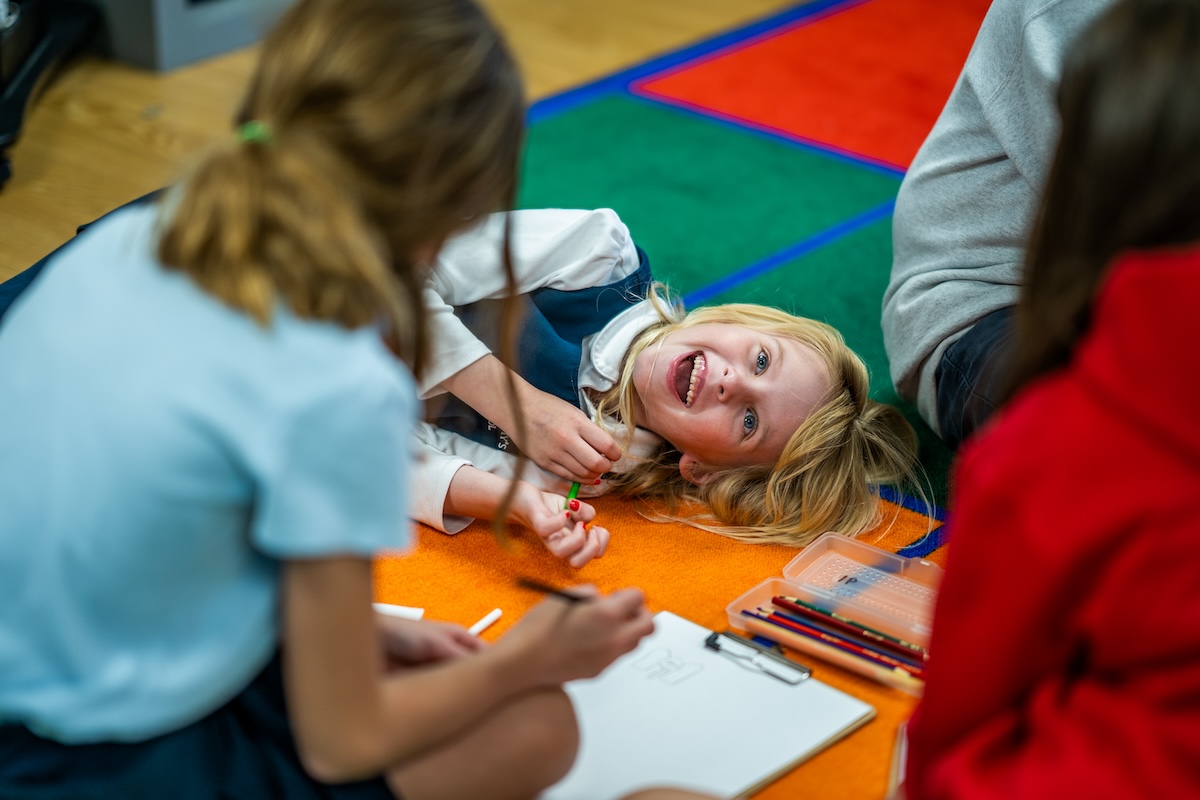When beginning their early education, many children assume that play starts and ends with recess. However, as school curriculums have evolved, teachers are incorporating opportunities to learn through play each day in the classroom.
At St. Timothy’s School, we recognize how vital learning through play is for young learners. That’s why we take an intentional approach to create a nurturing and open environment for learning through play and self-discovery. By engaging with their peers and educators in this type of environment, our students develop a foundation for lifelong learning and creativity. Read below to learn more about how our students learn through play in the classroom.
Language Play
Students are constantly developing their language arts and literacy skills, and learning through play will accelerate those learnings! Whether storytelling or engaging in rhyming games, young learners can engage new parts of the brain and get creative as they learn through play. Teachers might also incorporate writing in their learning through play activities to help students develop early writing skills.
Exploratory Play
Learning through exploratory play enables children to get their hands dirty—literally! These types of immersive learning activities target students’ senses and their drive for self-discovery. From finger painting to building figures out of magnet tiles, learning through exploratory play enables children to work hands-on and with ultimate creative freedom.
St. Timothy’s students learn through exploratory play as they engage in the classroom and in art education. Our pre-K to fourth-grade students participate in our visual arts programs, a co-curricular class that encourages imagination and self-expression through creative opportunities. Our middle schoolers also have the chance to take visual art as an elective, where they can use a variety of innovative mediums to engage in exploratory play, like photography, painting, or pottery.
Constructive Play
Imagination, fine motor skills, and creativity are just a few of the learning blocks of constructive play in the classroom. This form of learning through play is crucial to a child’s early development, as it allows them to reach new heights of self-expression and transform their creative ideas into reality. Teachers might incorporate learning activities such as drawing pictures with chalk outside or creating towers out of blocks. All of the learning through play opportunities engage students’ imagination and encourage them to dive deep into creative pursuits.
Social Play
Coinciding with its name, learning through social play taps into students’ social-emotional skill sets. These types of learning activities hone in on children’s communication, negotiation, problem-solving, and cooperation skills, teaching students how to acclimate to different social settings and groups. Social play comes in a variety of forms, including acting out play scenes, participating in team sports, or interacting with friends on the playground. However, regarding day-to-day classroom activities, social play can be as simple as partnering students together to work on a group project. Ultimately, students will innately discover ways to learn through social play. However, it still helps to encourage these social-emotional learnings in a core classroom curriculum.
Private Education at St. Timothy’s School
St. Timothy’s School is a private school in Raleigh, NC, that encourages learning through play inside and outside the classroom. With a comprehensive curriculum built on independence, creativity, problem-solving, and more, we inspire students to become lifelong learners. Visit our website today to learn more about learning through play at St. Timothy’s School.

